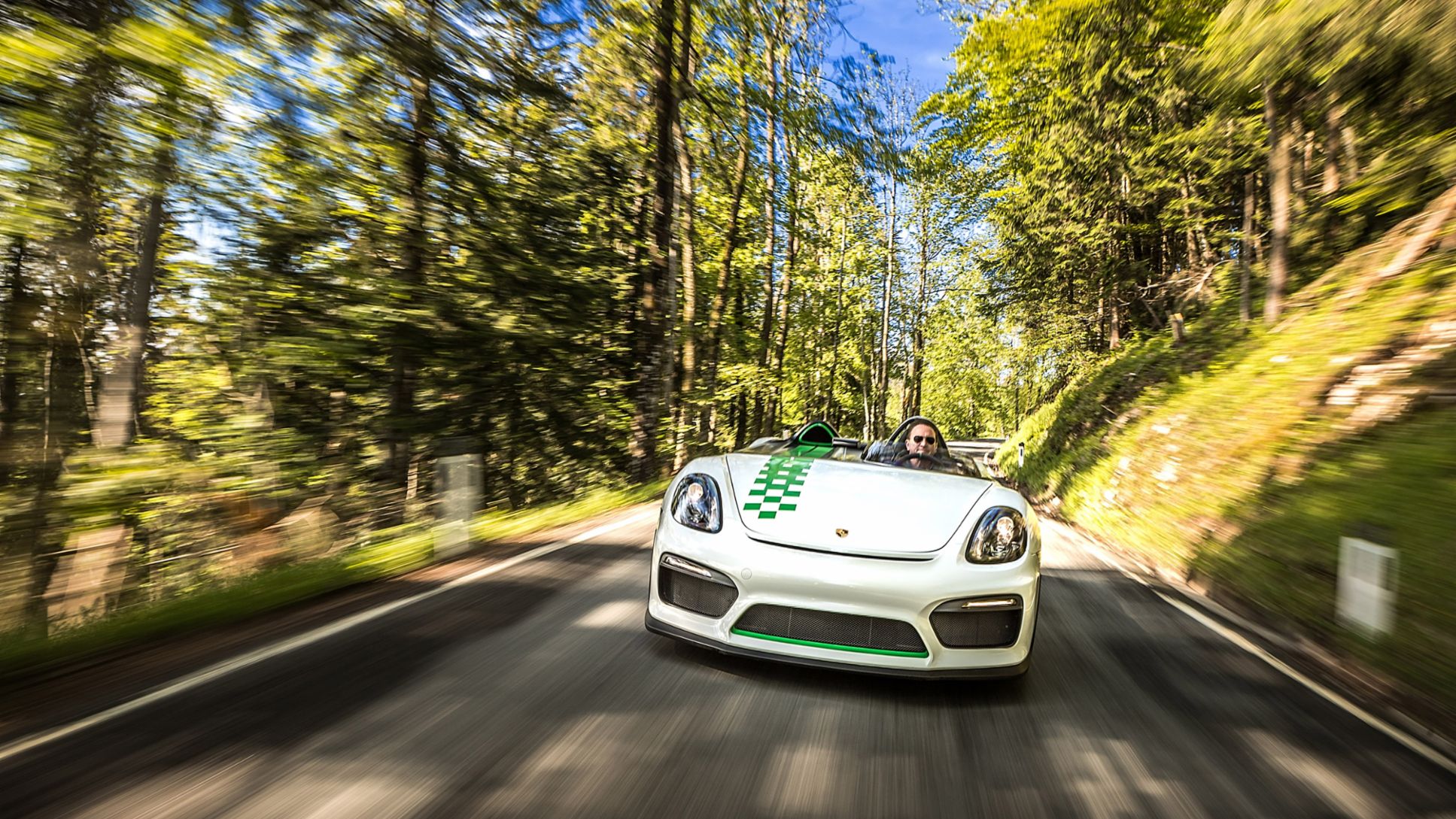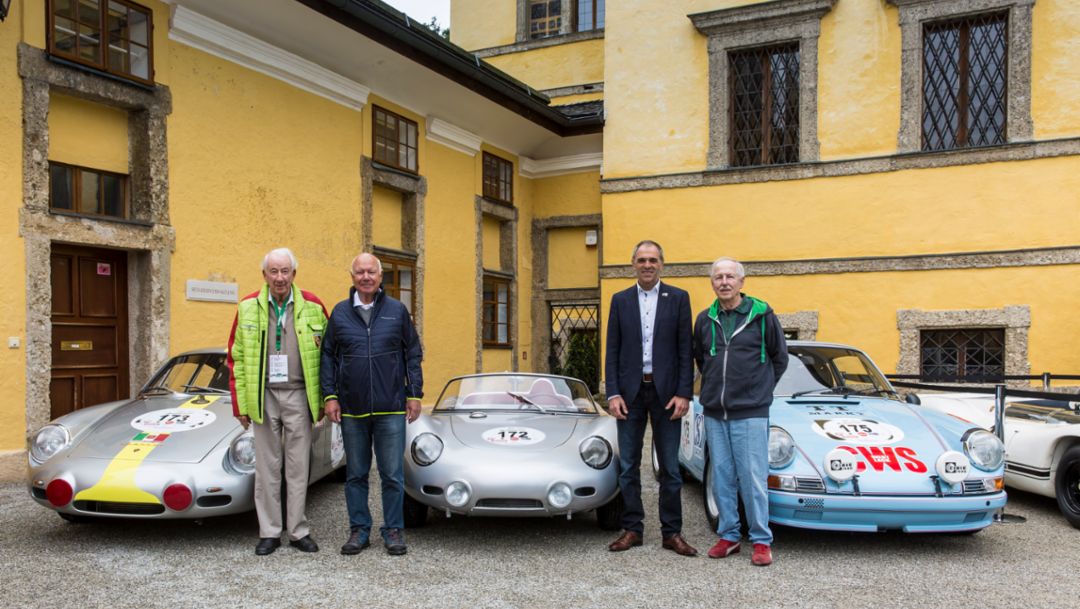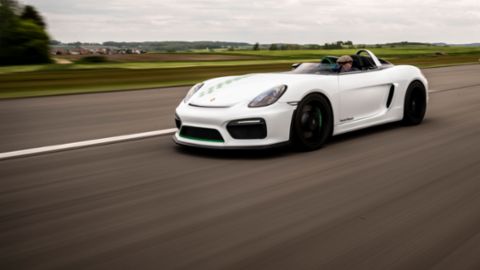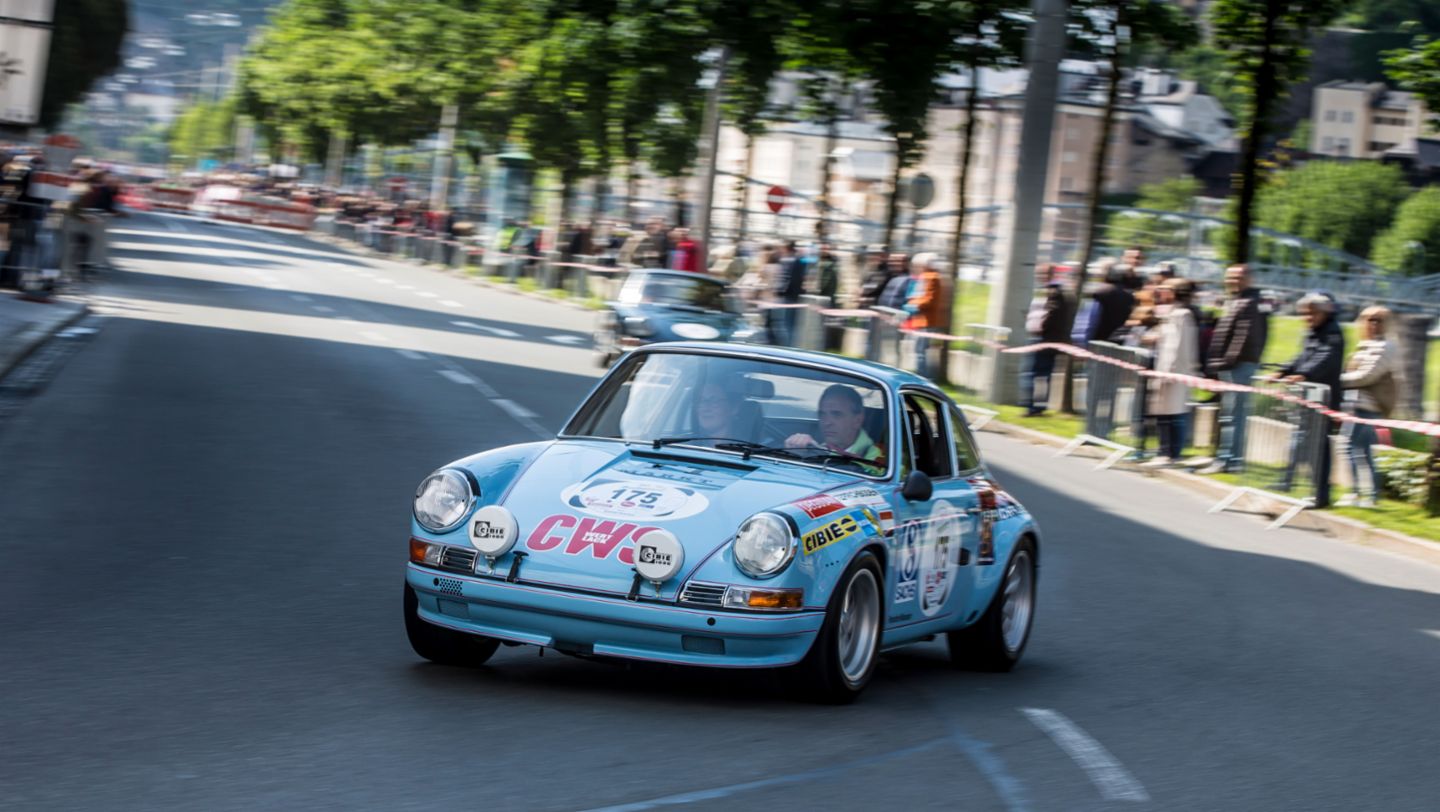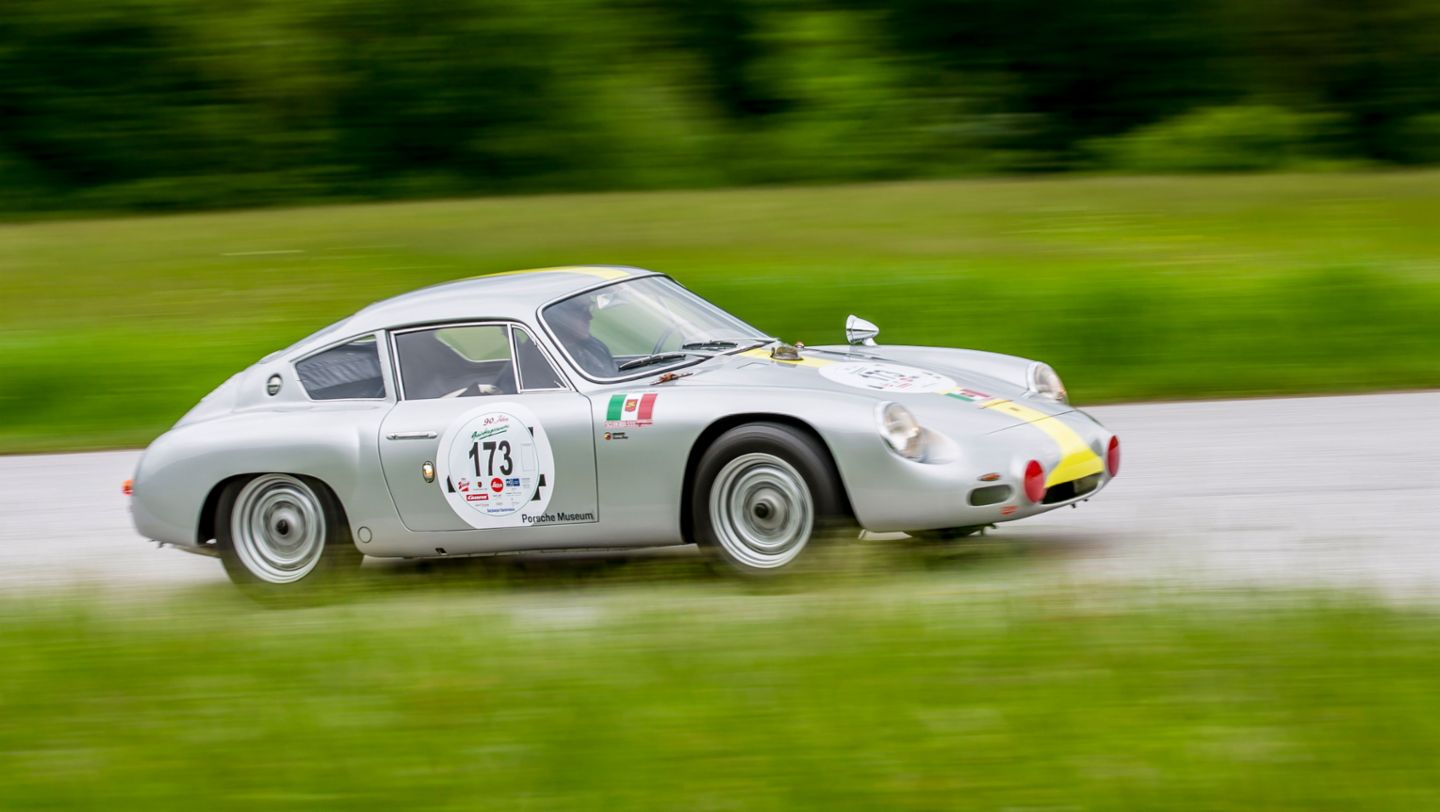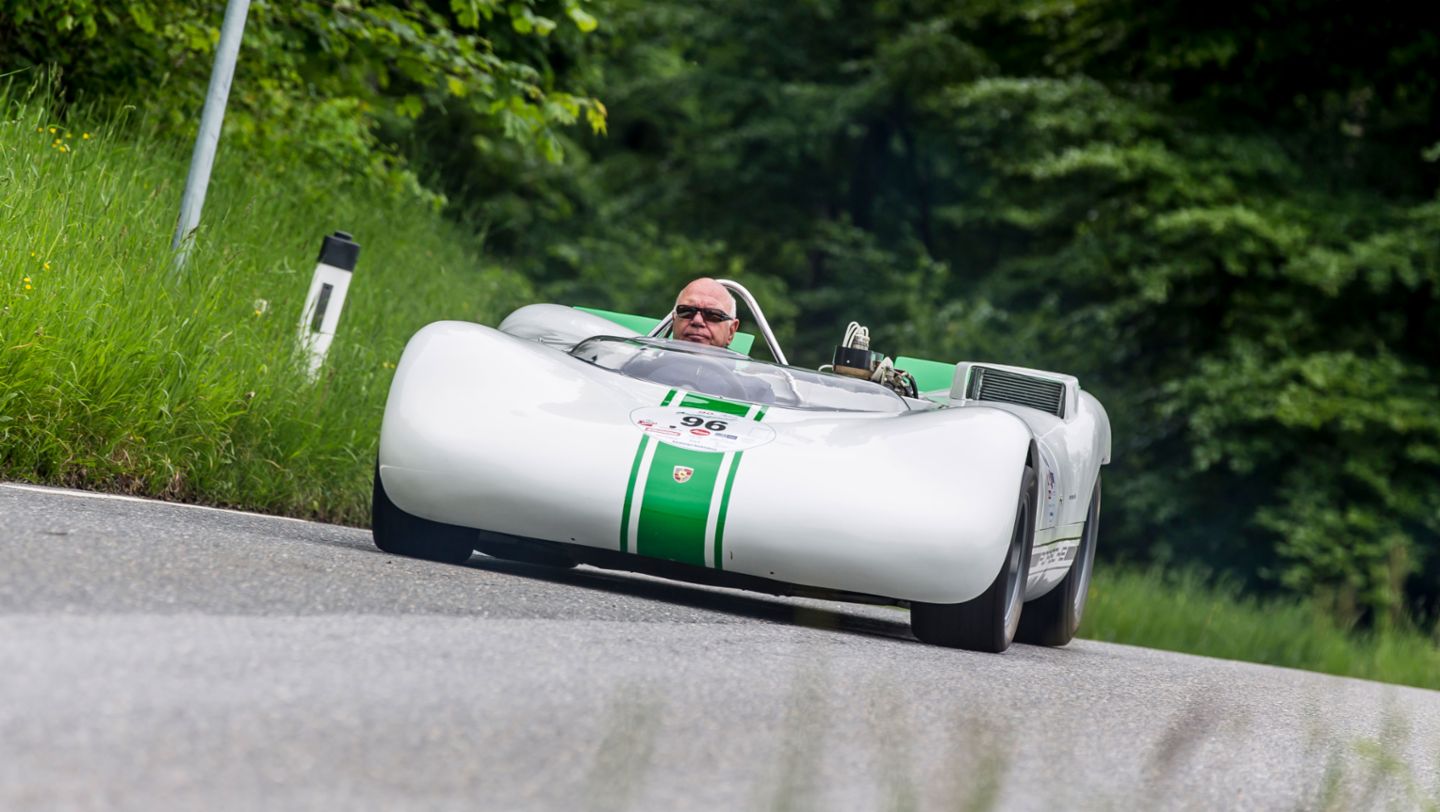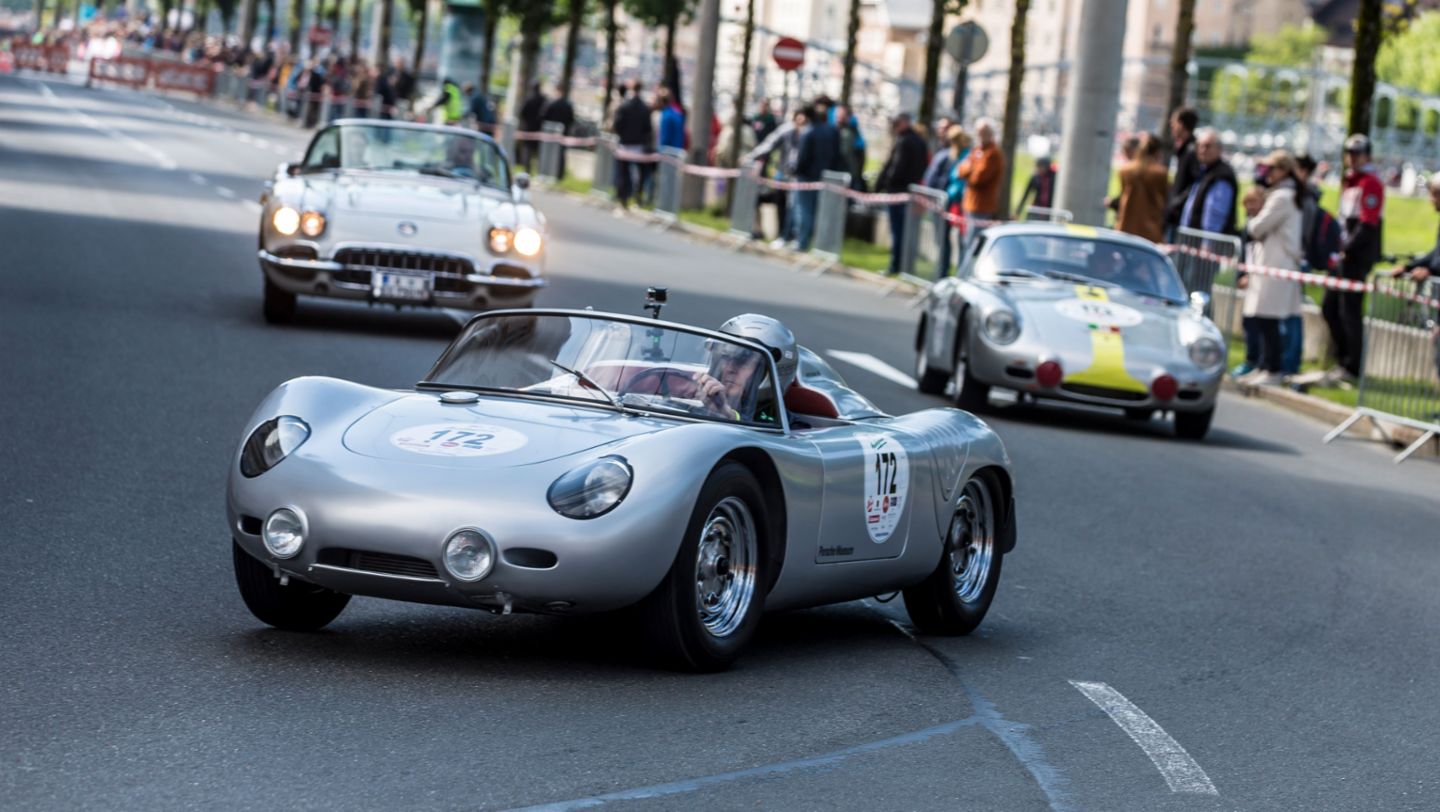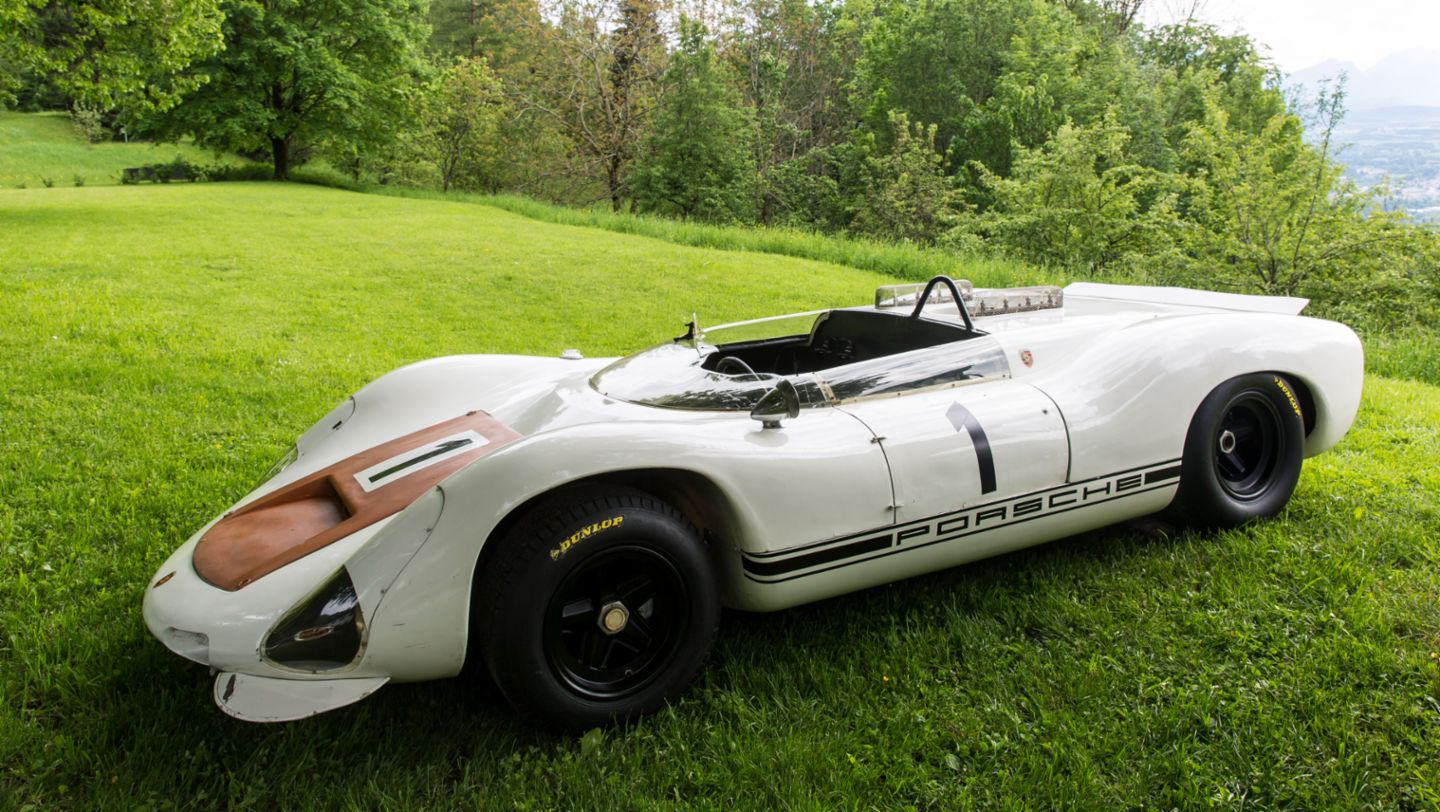When you hear a roar on the mountain it doesn’t necessarily come from rutting deer – it might well be from legendary Porsche racing cars. As is the case on Salzburg’s mountain, the Gaisberg. As part of this year’s Gaisberg Race – which was once a round of the European Hill Climb Championships – Porsche celebrated its annual “Porsche Legends @” series, which was launched back in 2016. Joining in the fun were the era’s best European hill-climb racers including Rudi Lins and Eberhard Mahle, former motorsport director Helmut Pietsch, and the lightest hill-climb racing cars from the 1960s such as the Porsche 909, 910/8, 718 RS 60, 356 B 2000 GS Carrera GTL Abarth and 911 2.5 S.
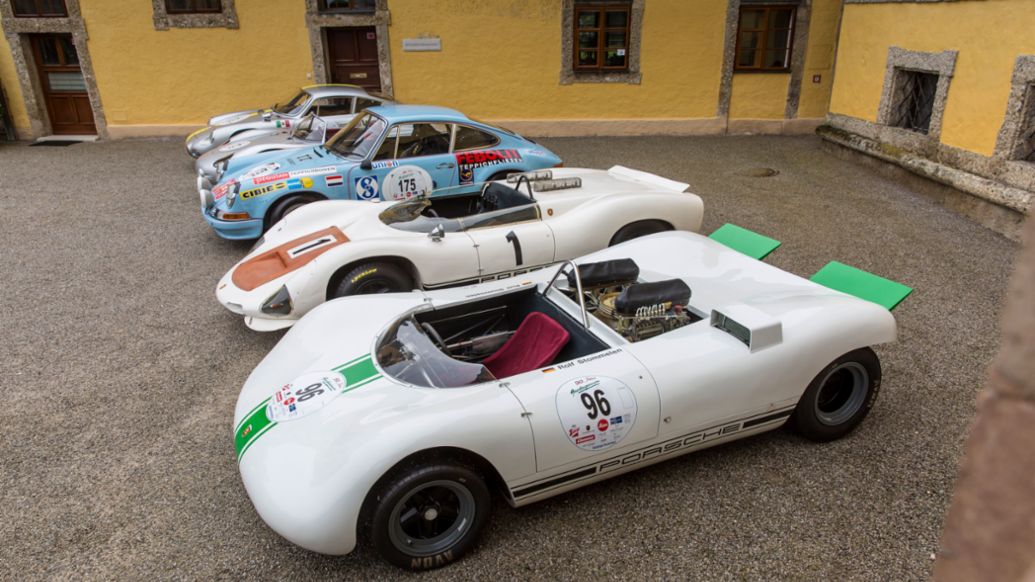
The “Porsche Legends @” triumvirate: drivers, cars and location
“Porsche’s presence on the 1,288 metre-high Gaisberg is partly due to the fact that the first race was held there exactly 90 years ago – and it is precisely 50 years since the last one,” explains Alexander Klein, Head of Vehicle Management at the Porsche Museum. Back then, the race track was exactly 8.628 kilometres in length with a height gain of 672 metres, which really put both man and machine to the test. “What’s more, some of our most iconic cars competed on the Gaisberg,” Klein continues. “The ultralight Porsche 909 and Porsche 910 race cars were pitted against each other in the same race on just two occasions – at Mount Ventoux in France and on the Gaisberg. That’s reason enough to showcase Porsche’s hill-climb history here.” And it is quite an impressive history. The company’s works sports cars competed here for eleven years between 1958 and 1968, securing nine European titles. Porsche regularly scored at least one class victory between 1958 and 1977.
It was not only the 909, at that time the lightest Porsche ever built, and the 910/8, which was manufactured from extremely unconventional materials, that were fêted on the mountain – three other models enjoyed success too. “The Porsche 718 RS 60 made its debut in 1958 and set the benchmark on the mountain for six years. This model and its near-identical successors secured six European Championship victories,” explains Klein. The Porsche 356 B 2000 GS Carrera GTL Abarth enjoyed three European Championship class wins from 1961 to 1963. And the 911 2.5 S is representative of the long series of 911 victories at the European Hill Climb Championships – Eberhard Mahle took class victory in only the model’s second race. Between 1966 and 1982, the 911 and subsequent derivatives claimed a total of 15 European Hill Climb Championships.
The protagonists of the time reminisce
Helmut Pietsch, a former Head of Engine Technology in the Customer Sports Department in Plant 1 and the on-site engineer in the 1960s recalls: “Our job was to keep an eye on the weather, use the correct gear set in each race and run the carburettor as close to the middle as possible. Because the higher the race climbed, the richer the engines ran.” Ultimately, each car was set up for the individual driver. “For instance, Gerhard Mitter was a real technician whose sensitivity enabled him to tune his car perfectly. Mitter analysed every detail and solved any problems.” His son Gerhard Mitter Jr. confirms this: “My father – European Hill Climb Champion between 1966 and 1968 – was able to focus all his energy and concentration when required. He was a very precise driver, very disciplined, and he loved his racing. But he too could not allow himself to make a single mistake, from the first tenth of a second to the last.” And that wasn’t easy, because you basically started with cold brakes and tyres.
Eberhard Mahle, now 86 years old, started out in a DKW in 1954 and, prior to his success in the Porsche 911 in 1966, was hospitalised for eighteen months as the result of a go-kart accident that was no fault of his own. On the Gaisberg, he drove the Porsche 356 B 2000 GS Carrera GTL Abarth safely to the top of the course. He had never raced that car on the mountain, but had contested the Nürburgring 1,000 km in it in 1961 and 1962. “My mountain car was the 911, although the Coupé was completely underpowered,” he recalls. “I raced the 165 PS 911 against the 300 PS Ferrari 275 GTB and the 370 PS Ford Shelby. That meant I had to handle six kilos per PS, while my competitors had three.” He finished the first race in third place in his self-built and modified 911, but then his driving skills, the lightness of the 911 and its excellent rear-engined traction on the mountain came into their own. “I won the next five races because they had lots more corners than the first track on the Rossberg. That made me the European Champion.” The fact that he touched a barrier and had to retire from the last race on the Gaisberg – where the car now had 182 PS thanks to some Porsche factory assistance – is just a footnote in Mahler’s career.
Rudi Lins (75), a former Austrian state and Hill Climb Champion, also has plenty of tales to tell. In 1967 he became European Hill Climb Champion in a Porsche 906. “The championship was decided on the Gaisberg. I absolutely had to win there to take victory in the sports car class with the Carrera 6. And I did it.” His very involvement in hill-climb races was due to two factors. Firstly, there were virtually no circuit races in Austria in the 1950s, and secondly, his parents owned a Porsche workshop. “We pretty much just bought old broken-down cars and repaired them to go racing.” Lins may have been a works driver for the endurance races, but he always competed as a privateer in hill climbs. He drove everything under the sun, from a 356 SC to a 1600 Carrera, 904, 906, and even a 910 in one race.
Only the 909 Bergspyder eluded him. So he was all the more delighted when he was given the chance to drive the iconic car at this year’s Gaisberg Race. “Only Stommelen and Mitter got to drive it at the time,” Lins says. “And even then I was amazed at how incredibly light the car was. I’ve just pushed the engine to 7,000 revs and managed to overtake other cars – it was so much fun. A long-held dream of mine has just come true.”
Five iconic cars on the Gaisberg
The Porsche 909 was just one of five hill-climb icons brought along by Porsche. Only two of them were ever built, and they were the lightest cars ever to roll off the Porsche production line. The race-ready car weighed just under 384 kilos, including fuel. With 275 PS at the rear, this gave a power-to-weight ratio of 1.4 PS per kilogram. The fibreglass body weighed just ten kilos. The frame was made of aluminium, and the coil springs of titanium. The car did not have an alternator or fuel pump. Instead, the power and fuel supply came from a silver battery and a pressurised petrol bladder. Two movable rear spoilers were connected to the wheel suspension, an idea that was later adopted in the first Porsche 917. However, the model had a short-lived career. In 1968, one of the two 909s was raced twice before Porsche turned its attention to circuit races and rallying.
The Porsche 910/8 Bergspyder was the dominant force before the 909 came along. Technically it was state-of-the-art, featuring materials such as titanium (brake calipers), beryllium (brake discs), magnesium (wheels), electron (tank), plastic (body) and aluminium. The running gear was similar to that of a Formula 1 car. The 910/8 initially weighed just under 450 kilograms. The tubular frame accounted for just 28 kilos. By 1968, the racer weighed in at just 400 kilos, having undergone further development. Powered by 275 PS from an eight-cylinder boxer engine, the racing car was an alluring piece of engineering that could sprint from 0 to 100 km/h in three seconds. The Porsche Museum has recently fully restored an original model – also to display it on the Gaisberg.
The first successful hill-climb race car, however, is the 718 RS 60 from 1960, a direct descendant of the 550 A Spyder from 1956 and the 718 RSK. Because a new regulation required vehicles to be closer to production vehicles and have larger minimum dimensions, Porsche increased the size of the frame on the 718 RSK to create a small usable luggage compartment, amongst other features. There was also a higher windscreen, which turned out to be problematic in terms of misting, dirt and water. This resulted in another windscreen wiper being installed. Lighter wheels and magnesium brake drums were added in an attempt to balance out the weight gain. The sports car manufacturer also adopted a completely new rear suspension, each with two wishbones, and also optimised the front axle. All of which significantly improved the car’s handling. The vertical shaft engine produced 142 PS. In addition to victories in the European Hill Climb Championship in 1960 and 1961, this model was also enjoyed success at the Targa Florio in 1960 and at that year’s 12 hours of Sebring. In America, the car was nicknamed “The Giant Killer” as it could hold its own and beat the likes of Mercedes, Maserati and Ferrari.
Porsche asked the lightweight specialist Carlo Abarth to fashion a new body for the 356 B in order to remain competitive in the GT class in the European Hill Climb Championship in the early 1960s. And so the Porsche 356 B 2000 GS Carrera GTL Abarth was born. The new aluminium body was flatter and much more streamlined. Inside, the Italian designer got rid of all superfluous features, including insulation. The gutted Porsche Abarth weighed almost 120 kilos less than a standard 356 B and came in at 778 kilos. The Fuhrmann engine produced 135 PS. The model went on to take multiple class victories, including at the Hill Climb Championships in 1960 and 1961.
The Porsche Museum also brought along a 911 2.5 S, which thundered up the mountain just like the other models. In late 1971, this race car was available to buy as a customer sports GT car. The displacement was slightly greater than its road-going counterpart thanks to Nikasil-coated alloy cylinders, larger bore and high-compression racing pistons. The car was a little lighter and the front wing larger, which meant it could take bigger wheels and track widths. Further fine-tuning of the engine ultimately resulted in 270 PS, some 80 PS more than the road model. The racer weighed in at 960 kilos, and only 21 were ever built.
Surprise: Porsche Boxster Bergspyder (981)
Porsche surprised everyone at the opening of the Gaisberg Race with a fully functional feasibility study never shown before: Porsche exterior designer Grant Larson drove up in the Boxster Bergspyder (981) in person. In 2015, the designer and his team were given permission to experiment with a Boxster to see how light they could actually make a road-going car. “Our initial goal was to stay under one tonne. But that was not possible because the base model is comparatively heavy due to its rigidity and multiple safety features. So we set a limit of 1,099 kilos.” First of all, the second seat was removed, followed by the roof and the windscreen. Larson then made the engine visible in a Boxster for the first time.
The car is fully roadworthy and is powered by 393 PS and 446 Nm. In theory, the final weight of 1,099 kilos should be good enough for a Nürburgring lap time of less than 7.30 minutes, which would be close to the times set by the 997 GT2 – and entirely worthy of a Porsche. Especially a lightweight Bergspyder.
